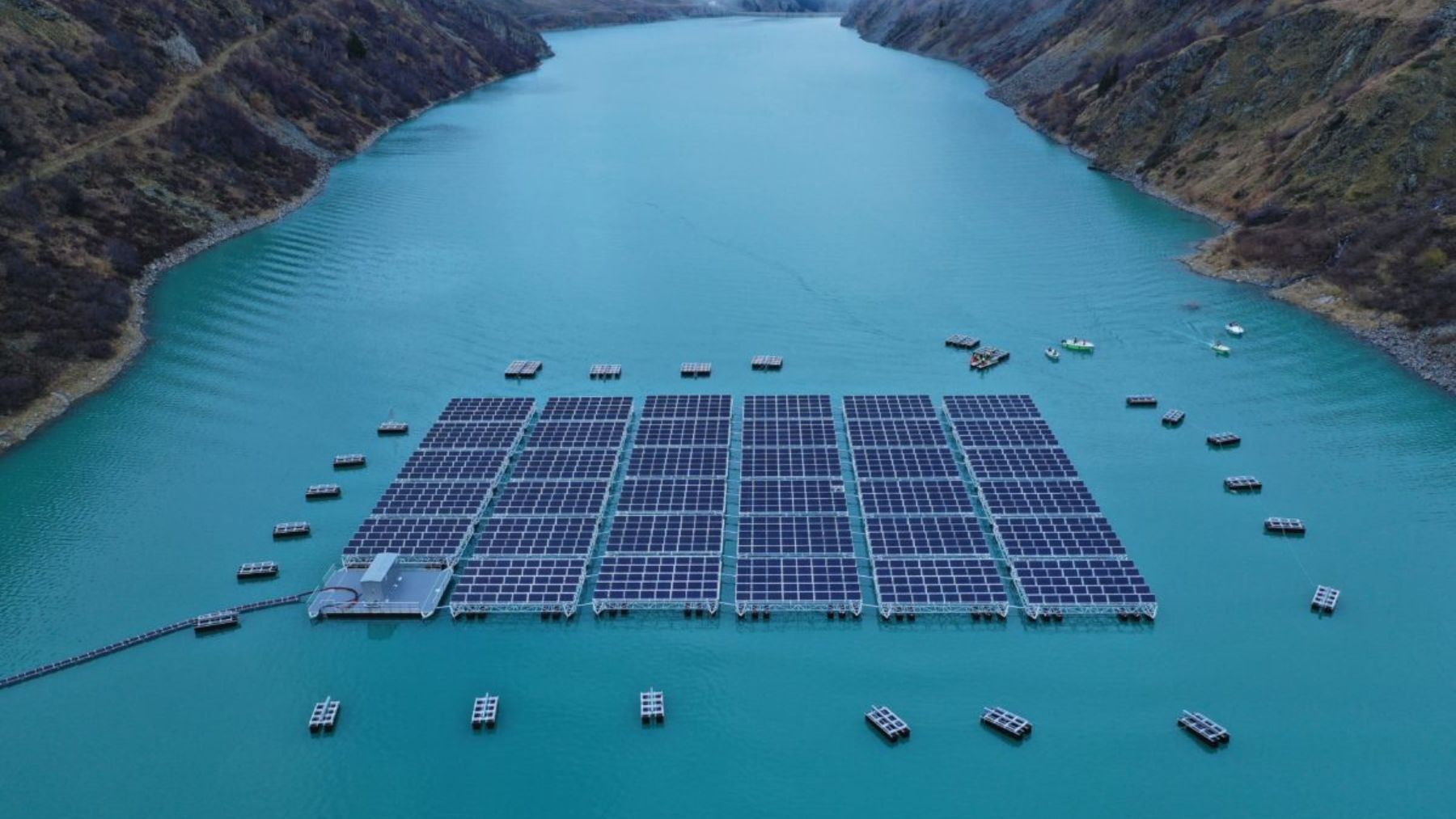Find them solar panels floating in the Alps in the middle of the snow and in fact its arrangement has caused something strange to happen. This is a project that is almost as surprising as this magnetic levitation wall that can replace conventional solar panels. It is becoming increasingly common to see installations of floating solar panels in ditches and reservoirs to produce energy. At the same time, this location makes it possible to prevent water evaporation in times of drought.
For now the Swiss Alps They do not suffer from water shortage. However, recently they found an important reason to implement this floating photovoltaic cells. Las floating solar panels They represent photovoltaic installations carried out on maritime, swampy or watery surfaces.
Yet another expression and configuration of solar energy, the use of which is spreading more and more around the world because of its benefits. Theoretically, any space surrounded by water would be optimal for its installation floating solar panels.

Whether oceans, lakes, dams or swamps, they all provide suitable terrain for the location of photovoltaic modules. According to the portal Your energyIn general, the temperature around the water is usually lower than that at the surface. Taking into account that the modules lose their efficiency due to heat, it is estimated that the floating solar panels They achieve a higher performance of between 10 and 15%.
They cover the Swiss Alps with solar panels: they are in the middle of snow and they have achieved something unthinkable
In 2019, the Swiss company Romande Energie has installed a floating solar park of 448 kW Lac des Toulesthe first facility of its kind located in a reservoir 1,810 meters above sea level. This includes 35 platforms two-sided solar panels and extend over 2% of the lake surface.

The platforms float anchored to the bottom from June to December, when the reservoir is full of meltwater. The rest of the year is solar panels They rest on the ground.
A team from the Zurich University of Applied Sciences studied the floating lake facility. Research in which they came to the conclusion that the small solar park causes a ‘strange’ effect: it earns back the energy investment in just 2.8 years due to the greater radiation. The analysis evaluated the environmental impact of the system from raw material extraction to end of life.
Experts in the field compared this high-altitude installation with low-altitude floating systems and with land-based installations. These results show that the carbon footprint of the Los Alpes floating system is approximately 94 g CO2 eq per kWh of electricity generated, a value significantly lower than that of traditional solar installations.
Despite the demonstrated efficiency, the researchers concluded that there is still room to reduce the environmental impact and costs associated with these systems. For example, reducing the use of aluminum so that they become more environmentally friendly pieces.
Switzerland is going to build the largest solar energy park in the Alps
According to the renewable line, Swiss began building its largest solar farm in the United States Alps. There will be 5,700 in total solar panels that will provide delivery to the 6,500 homes in the canton of Graubünden (southeast) and located at 2,200 meters above sea level. Its installation will produce electricity in winter, when other panels in low areas are covered with fog.
With the implementation of solar panels in the middle of the snow, Alps is still in the world’s sustainable spotlight. A context that reminds us of Spain, which has covered this city with solar panels.

